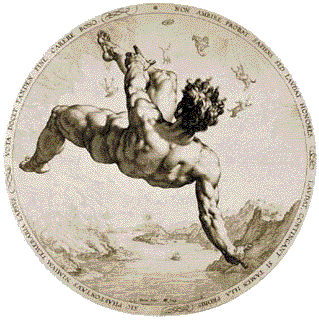London and Japan (Yokohama and Tokyo)
by Rottman, Strome & Co. (?)
London and Japan (Yokohama and Tokyo). Very good. Very large specimen of Japanese "Leather Paper" (415 x 345 mm), embossed in high relief and gold lacquered, with repeating patterns of stylized birds and butterflies (some wear and creasing, edges irregularly trimmed). AESTHETIC MOVEMENT ERA JAPANESE "LEATHER PAPER," AN EXTRAORDINARY EXPRESSION OF LATE NINETEENTH-CENTURY INDUSTRIAL ART. OUR SAMPLE IS RICHLY EMBOSSED IN HIGH RELIEF WITH BIRDS AND BUTTERFLIES, UPON WHICH A THICK LAYER OF GOLD LACQUER WAS APPLIED TO ACHIEVE A DAZZLING, LUMINOUS GILDED APPEARANCE.
The present specimen was discovered in Britain; one could describe it as fin-de-siècle Japonisme in the service of commerce. Members of the Aesthetic Movement such as Christopher Dresser seized upon the designs and manufacturing process of Japanese leather paper. Indeed, the design of our sample is remarkably similar to some of Dresser's two-dimensional work, to the extent that one wonders if it was actually produced in Britain, and not in Japan.
Japanese leather paper is not well known by book historians today, least of all by us who in 38 years of working with rare books had never handled -- or even seen -- an actual specimen until now. However, in the Victorian era, it was very fashionable to cover entire walls with Japanese leather paper, not only in France and Britain but in America. Produced in Japan by skilled craftsmen, Japanese leather paper was (and is) composed of fine individual sheets of handmade paper pressed together and then embossed. The entire roll was gilded, and the field color was stenciled over it. A layer of lacquer was then applied as a final coat which provided protection as well as a luxurious sheen to the finished design, as here.
The design of the present specimen has not been located elsewhere. It seems most likely that our specimen was exported from Japan through the agency of the English firm Rottmann, Strome, and Co. In the 1870s, Rottmann, Stome began to import imitation leather papers from Japan with notable success; the company soon established their own factory in Yokohama dedicated to the manufacture and export of these papers, becoming the world leader in the production of Japanese leather paper.
"Present evidence suggests that the manufacture and export [of leather paper] was the result of two influences in Great Britain during the Aesthetic Movement. The first was a revived interest in early embossed leather hangings at a time when papermaking technology using wood and a host of other materials enabled feasible imitations by wallpaper makers. The second was Japan's openness to Western trade and technology during the Meiji Restoration (1868-1912). The coincidence of the two brought the West into contact with the Japanese craft of making imitation leather." (SOURCE: Felicity Leung. "Japanese Wallpaper in Canada, 1880s-1930s" in: Material History Bulletin 28, Fall 1988, pp. 35-42, with numerous references).
MUST BE SEEN TO BE FULLY APPRECIATED. (Inventory #: 4349)
The present specimen was discovered in Britain; one could describe it as fin-de-siècle Japonisme in the service of commerce. Members of the Aesthetic Movement such as Christopher Dresser seized upon the designs and manufacturing process of Japanese leather paper. Indeed, the design of our sample is remarkably similar to some of Dresser's two-dimensional work, to the extent that one wonders if it was actually produced in Britain, and not in Japan.
Japanese leather paper is not well known by book historians today, least of all by us who in 38 years of working with rare books had never handled -- or even seen -- an actual specimen until now. However, in the Victorian era, it was very fashionable to cover entire walls with Japanese leather paper, not only in France and Britain but in America. Produced in Japan by skilled craftsmen, Japanese leather paper was (and is) composed of fine individual sheets of handmade paper pressed together and then embossed. The entire roll was gilded, and the field color was stenciled over it. A layer of lacquer was then applied as a final coat which provided protection as well as a luxurious sheen to the finished design, as here.
The design of the present specimen has not been located elsewhere. It seems most likely that our specimen was exported from Japan through the agency of the English firm Rottmann, Strome, and Co. In the 1870s, Rottmann, Stome began to import imitation leather papers from Japan with notable success; the company soon established their own factory in Yokohama dedicated to the manufacture and export of these papers, becoming the world leader in the production of Japanese leather paper.
"Present evidence suggests that the manufacture and export [of leather paper] was the result of two influences in Great Britain during the Aesthetic Movement. The first was a revived interest in early embossed leather hangings at a time when papermaking technology using wood and a host of other materials enabled feasible imitations by wallpaper makers. The second was Japan's openness to Western trade and technology during the Meiji Restoration (1868-1912). The coincidence of the two brought the West into contact with the Japanese craft of making imitation leather." (SOURCE: Felicity Leung. "Japanese Wallpaper in Canada, 1880s-1930s" in: Material History Bulletin 28, Fall 1988, pp. 35-42, with numerous references).
MUST BE SEEN TO BE FULLY APPRECIATED. (Inventory #: 4349)










![[HORSE MEDICINE MANUSCRIPT] Recette des tres Excellent Remede pour la guerison des Chevau esprouvé tous plusieur fois par Le Sieur Bourbonne, Marechal Légere](https://d3525k1ryd2155.cloudfront.net/h/762/873/1676873762.0.m.jpg)
